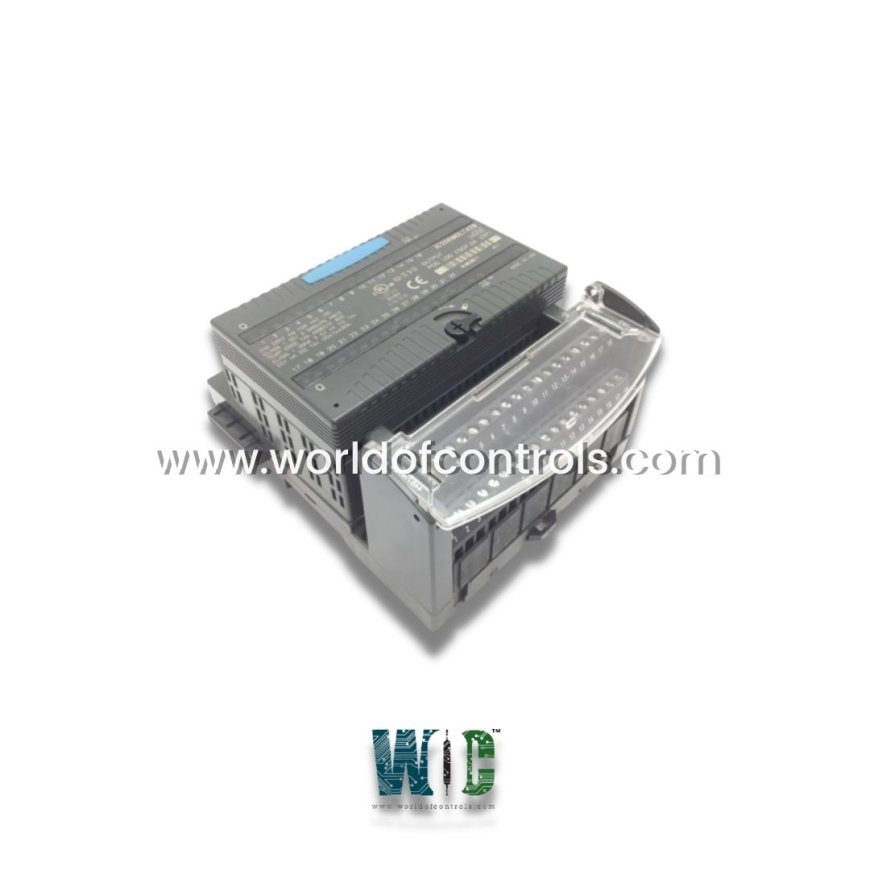Key Features and Applications of GE Discrete Output Modules

Introduction
In the field of industrial automation, discrete output modules serve as essential building blocks for controlling a wide range of field devices. Whether managing lights, relays, solenoids, or alarms, these modules ensure the precise execution of control commands from programmable logic controllers (PLCs). GE, a recognized name in automation and energy technologies, offers a suite of high-performance discrete output modules tailored for demanding industrial environmentsincluding turbine control systems.
This article explores the standout features of GE discrete output modules and how they are applied, especially in the high-stakes world of turbine operations.
What Are Discrete Output Modules?
Discrete output modules are devices used to send binary (ON/OFF) signals from a control system to external devices. Unlike analog outputs that vary across a range, discrete outputs are either active or inactiveperfect for signaling operations such as starting motors, opening valves, or triggering safety systems.
These modules are a core part of automation architectures where real-time decision-making and high-speed execution are required. Their value is particularly evident in systems that must respond quickly to dynamic conditionslike those found in power generation and turbine control.
GEs Approach to Discrete Output Technology
GEs discrete output modules are designed for use in modular PLC and remote I/O platforms, such as VersaMax and PACSystems. These modules offer a range of configurations and voltage types, allowing engineers to tailor solutions based on specific project requirements.
General Features Include:
-
DC Voltage Operation (12/24V): Suitable for standard industrial power supplies
-
Multiple Output Points (typically 16): Allows control of numerous devices from a single module
-
Positive Logic (Sourcing) Outputs: Delivers voltage to loads when active
-
High Output Current Capacity: Each output can drive actuators or relays directly
-
Optical Isolation: Prevents electrical noise and ground loops from affecting the system
-
Per-Channel Status LEDs: Supports fast diagnostics and status checks
-
Modular Integration: Easily plugs into GE backplanes and I/O racks for scalable deployment
Applications in the Turbine Industry
The turbine industry demands a high level of precision, safety, and reliability. Discrete output modules from GE have proven their value in these environments, particularly in systems where timing, fault tolerance, and durability are paramount.
1. Control of Valves and Actuators
Turbine systems rely on mechanical components like steam and fuel valves, which must be actuated precisely and repeatedly. Discrete output modules enable direct control of these components, helping manage the exact timing of start-up and shut-down sequences.
2. Support for Emergency Trip Systems
Turbines are equipped with emergency trip (ET) mechanisms to prevent catastrophic failures. GEs output modules can be configured to trigger these systems immediately when a fault or unsafe condition is detected, helping meet strict safety requirements.
3. Integration with Redundant Control Systems
To ensure high availability, turbine control often involves redundant architectures. GEs modules are capable of working within redundant or fault-tolerant systems, supporting seamless switchover in case of a failure without interrupting critical operations.
4. Interface with Remote I/O Panels
In large power plants, discrete output modules are often deployed in remote I/O configurations. This allows centralized turbine controllers to manage field devices spread across wide geographic areasreducing wiring complexity and improving maintainability.
Advantages in Turbine Operations
GE discrete output modules offer several benefits that make them ideal for turbine applications:
-
Fast Switching Speeds: Enable quick responses to dynamic operating conditions
-
Robust Diagnostics: Built-in indicators help operators monitor system health in real-time
-
Reliable Operation in Harsh Environments: Industrial-grade design withstands vibration, heat, and electrical noise typical in turbine housings
-
Ease of Replacement and Maintenance: Modular form factor allows quick swapping, minimizing downtime during servicing
-
Seamless System Integration: Fully compatible with GE turbine control platforms, simplifying system architecture
Conclusion
GE discrete output modules are a cornerstone of modern turbine automation systems. Their robust construction, modular design, and seamless compatibility with GE control infrastructure make them indispensable in settings where performance and reliability are non-negotiable.
From initiating valve sequences to triggering critical safety shutdowns, these modules ensure that turbine control systems operate safely, efficiently, and without interruption. For engineers and system integrators working in the energy sector, GEs digital output technology continues to offer dependable solutions to complex industrial challenges.
View More Products



























